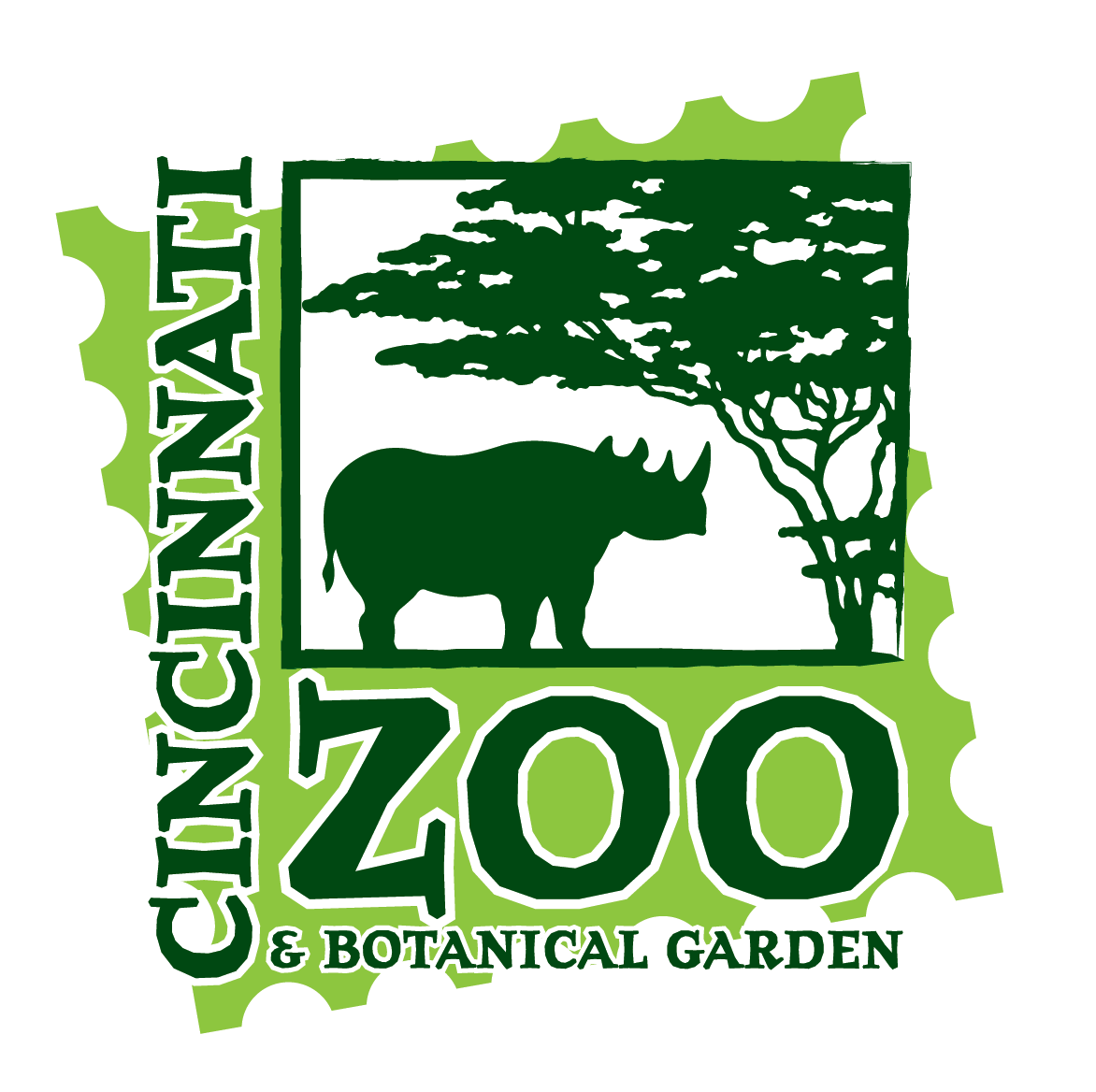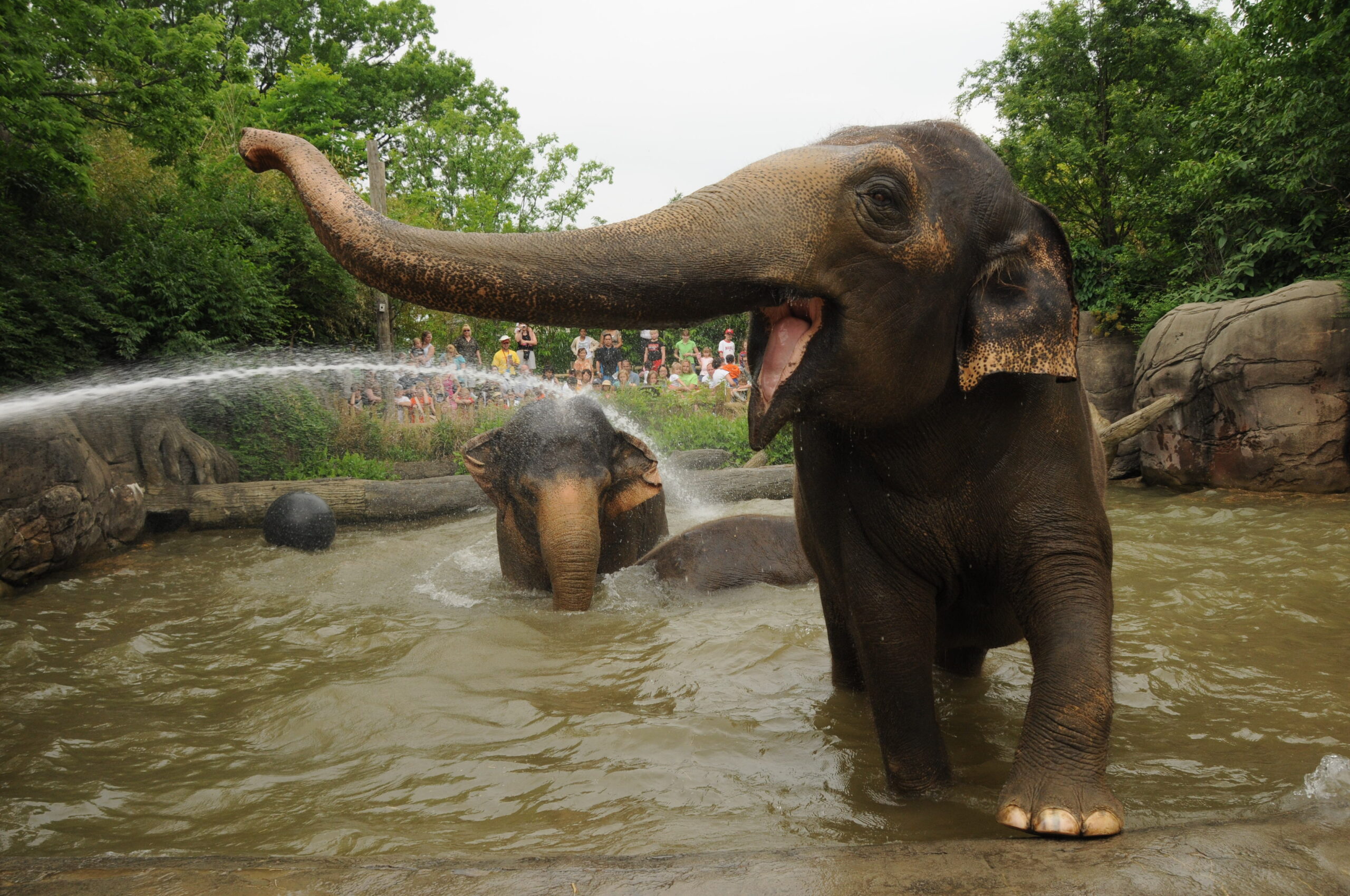$50 Million Gift to Cincinnati Zoo Sets Elephant-Sized Future Zoo Plans in Motion
Local philanthropists make biggest donation in Zoo history
 CINCINNATI (June 7, 2018) – Today, the Cincinnati Zoo & Botanical Garden announced an historic gift that will allow it to embark on a bold campaign to ensure its future. Local philanthropists, Harry and Linda Fath, who also made a generous donation to help the Zoo complete its indoor gorilla facility and Africa habitat, have stepped up with an unprecedented, transformational gift of $50 million that gets the Zoo one third of the way to its goal of raising $150 million for its “More Home to Roam” capital campaign by 2025.
CINCINNATI (June 7, 2018) – Today, the Cincinnati Zoo & Botanical Garden announced an historic gift that will allow it to embark on a bold campaign to ensure its future. Local philanthropists, Harry and Linda Fath, who also made a generous donation to help the Zoo complete its indoor gorilla facility and Africa habitat, have stepped up with an unprecedented, transformational gift of $50 million that gets the Zoo one third of the way to its goal of raising $150 million for its “More Home to Roam” capital campaign by 2025.
“Why are Linda and I making this contribution? The reasons are too many to name, but the Zoo is one of the jewels of our city, so we decided the Cincinnati Zoo has to be one of our transformative gifts,” said Harry Fath.
The improvements made possible by the Faths’ generous donation will help maximize the visitor experience and provide better care and well-being for the animals that live at the Zoo, especially the elephants. The jewel of the campaign will be a giant habitat, nearly five times the size of the current elephant yards, for the Zoo’s giants!
“The future of the Cincinnati Zoo is bigger and brighter than ever thanks to the generosity of Harry and Linda Fath who believe in our vision to build a better Zoo,” said Zoo Director Thane Maynard. “Cincinnati Zoo plays a key role in our community and around the globe, and we are grateful that Harry and Linda recognize and support our efforts to make a difference and inspire visitors with wildlife. Their gift allows us to move forward with plans to improve and expand the Zoo for future generations.”
Plans for the new Zoo, which will be completed in phases, include an Australian-themed area with an activity course, a re-designed entry with safe visitor access and parking solution, enhanced visitor experiences, and bigger, more naturalistic spaces for animals. As the greenest zoo in the country, the Zoo is also on track to be ‘net zero energy, water and waste’ by 2025.
“This fundraising campaign will transform what’s already one of our country’s top zoos and make the experience for visitors even better,” said United States Senator Rob Portman. “I’m excited about it. We are unmatched in Cincinnati as far as I’m concerned with our zoo. And, with the help of our community we will be sure to maintain that amazing legacy we have.”
 Roo Valley – Expected to open in 2020:
Roo Valley – Expected to open in 2020:
Wildlife Canyon will be transformed to include a two-level activity course, 25 feet high in the treetops, that will accommodate visitors of all ages and abilities. Beneath the trees, guests will enjoy the 15,000-square-foot grassy kangaroo walkabout with kangaroos and wallabies mere feet away. The little penguins will also get a new home complete with underwater viewing for guests. A new, gently sloping path will replace the current staircase. This winding, naturalistic path will offer views into the Steller’s sea eagle and Andean condor habitats.
 Beer Garden – Expected to open in 2020:
Beer Garden – Expected to open in 2020:
A new multi-tiered seating area will be added behind the Watering Hole food and beer station where guests can relax and enjoy the view of Roo Valley.
 Entry Village – Expected to open in 2020:
Entry Village – Expected to open in 2020:
Twelve new ticket windows and additional queuing space will streamline entry into the Zoo. Amenities such as more family style restrooms and more storage space for strollers and wheelchairs, as well as a calming room for guests with developmental disabilities, will improve the visitor experience.
Safe and Efficient Visitor Access – Expected to open in 2023:
The Zoo is the #1 attraction in Hamilton County, creating a significant economic and cultural benefit to the families in the region. Attendance growth is directly connected to the Zoo’s ability to provide access into the Zoo. An 1,800-car parking garage will allow nearly five acres of green space for elephants inside the Zoo while offering safe visitor access and alleviate parking and traffic issues for neighboring businesses and residents.
Rhino Reserve – Expected to open in 2023:
To manage black rhino breeding pairs and their offspring, the Rhino Reserve will be redesigned to include multiple outdoor yards. This critically endangered species is solitary except when breeding or rearing young, so “alone time” space is crucial for them to thrive. Plans for this area also include a larger, mixed species yard, expanded moats and visitor viewing decks.
Elephant Trek – Expected to open in 2025:
Removing cars from Zoo grounds will allow the Zoo to give elephants more trunk space. Their new, next generation habitat will be nearly five times the size of their current yards and will feature naturalistic trees, mud wallows, grasses, pools and streams.
“Our hope is to see a multi-generational elephant herd with up to 10 elephants roaming where a parking lot used to be,” said Maynard. “And that future generations will get to see and experience that too.”
Kids will also enjoy a nature-based play area with water elements. From the day it opened, the Cincinnati Zoo has led the way in the care and management of Asian elephants. The effort to build a better home for them demonstrates its continued commitment to care for this magnificent species.
Existing Habitat Improvements:
As science and research gives us a better understanding on how to care for and help breed polar bears, the Zoo will need to make modifications to its current Kroger Lords of the Arctic habitat. This includes creating an environment conducive to breeding, providing isolated denning opportunities for female polar bears, separate habitat areas for male and female bears and natural substrates. The current sea lion habitat will also get a makeover creating more shade, easier access to the main pool from the back area and water filtration upgrades.
A Commitment to Net Zero Energy, Water and Waste:
As part of this ambitious capital campaign, the Zoo is taking their groundbreaking, robust storm water management program to the next level to drive down non-potable water use to zero. By capturing 100% of the storm water and reusing it in the habitats, the Zoo can divert the water out of the city’s combined sewer system. The Zoo will also focus on being net zero energy by driving efficiencies throughout the existing systems and pursuing advanced energy options including solar, wind and biomass. And, with proper organic waste management, the Zoo will strive to become a net zero waste facility.
The Zoo is committed to providing better homes for the animals and a better Zoo for visitors and is asking for donations to achieve its vision for the future. Thanks to the generosity of Harry and Linda Fath, every dollar donated will be matched!

